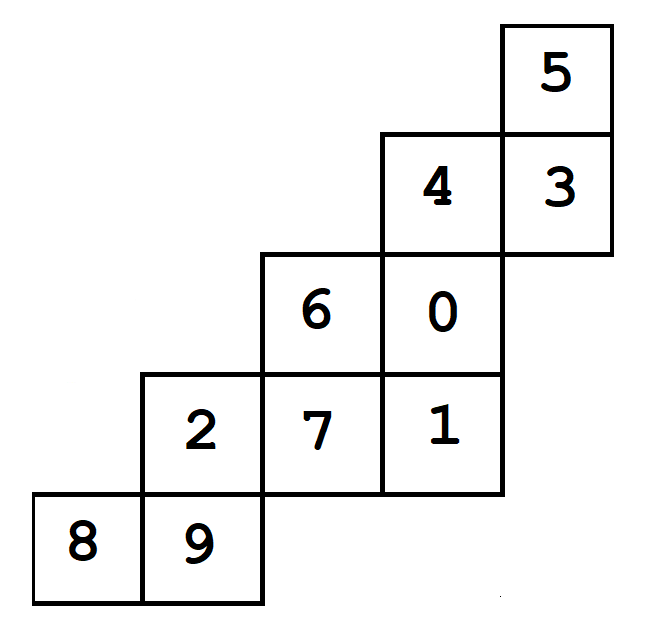When you fill in each box in the grid below with a different number from 0 to 9, you will form eight two- and three-digit numbers in
the rows and columns (four reading across, and four reading down). Can you find a way to fill in the grid so that the following statements are all true?
1. Each digit from 0 through 9 is used once.
2. No number begins with 0.
3. Seven of the eight numbers are prime; the number that is not prime reads across.
4. One of the numbers is the sum of two of the others.

Solution to the Problem:

The prime numbers are 29, 43, 53, 67, 89, 271, and 401.
60 is not prime.
The number 89 = 29 + 60.
Gina Meyers shared one of her student's thought process in solving the problem. Here is Akira's solution:
1. Place the 0 at the end of the middle row.
It can’t go at the beginning of anything (given rule).
If it goes at the end of anything then that number will be divisible by 10 and so will not be prime.
We know there is only ONE non-prime number and that is horizontal.
It has to be the number in the middle row because all the numbers on the other rows share an ending digit with a vertical number in one of the columns.
2. All the other numbers then have to end with either 1, 3, 7 or 9.
They can’t end with 2, 4, 5, 6 or 8, because then they wouldn’t be prime.
3. There must be a pair of primes which are separated by a multiple of 10.
The prime numbers are all odd, and so if you add any two of them you will get an even number. So you can’t add two of the primes to get another of the primes. You must have to add the non-prime number to one of the primes to get another prime. The non-prime number ends in 0 so it is a multiple of 10, which means the two primes differ by a multiple of 10.
4. This pair must be in one of the 3-box-corners.
Since the pair of primes will end with the same digit, they must be in one of the intersecting vertical-horizontal pairs. They can’t be the 3-digit pair because the 3-digit horizontal number must have either a 1, 3, 7, or 9 in the middle place. This means its tens digit will differ from the tens digit of the vertical number by either 9, 7, 3, or 1. But the digit at the beginning of the non-prime number (i.e. in the tens place) has to be 2, 4, 5, 6, or 8.
5. The pairs must be separated by either 20 or 60.
Make a list of all the two-digit primes which start with 2, 4, 5, 6 or 8. There are no pairs which end with the same digit but which are separated by 40, 50 or 80.
6. Check all possibilities. Process of elimination yields only solution.
Correctly solved by:
| 1. 유순호 (Soonho You) | JeonJu, South Korea |
| 2. Akira |
Ms. Meyers' Maths Challenge Program Lyneham Primary School Canberra, Australia |
| 3. Ivy Joseph | Pune, Maharashtra, India |
| 4. James Alarie | Flint, Michigan |